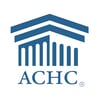At ACHC, our Surveyors are truly experts in their fields. Accreditation Corporate Surveyor Randy Hughes is no exception. Hughes is a registered Respiratory Therapist with over 45 years of experience whose areas of expertise include quality management, operational efficiency and medical gas CGMP compliance. Hughes recently wrote an article for HomeCare Magazine that examined accreditation considerations for alternative delivery models in HME. Read a condensed version below, or click here to read the full article. Congratulations, Randy!
Changing reimbursement environments, tightening regulatory requirements and managed care are forcing HME providers to develop alternative delivery models for equipment and services. The goal of each has been to provide service more efficiently and effectively while decreasing labor costs.
An important consideration with each model is “who owns the patient?” Who is responsible for providing products to the patient in the appropriate manner? This usually is driven by who bills (and who gets reimbursed) for the equipment or services provided. The “owner” needs to ensure that goods and services are delivered in a manner that meets all accreditation requirements.
The following are examples of alternative delivery models currently in use as well as the associated accreditation implications.
Direct Shipping
- Not new, but the types of products being shipped have evolved. Oxygen concentrators and CPAP therapy equipment are routinely sent through the mail, so much so that equipment manufacturers have become providers.
- Accreditation considerations:
- Documentation of shipping and receipt; patient education; evaluation of safety-related issues and the provision of care process; patient acknowledgement of receipt of patient rights and responsibilities; HIPAA acknowledgement; AOB, etc.
Group patient teaching
- New patient “classes” that include group demonstrations, patient education, and interface fitting.
- Gaining popularity for new and re-instruction CPAP patients and group compressor/nebulizer instructions.
- Significant increase in staff productivity; patient interactions have resulted in the formation of patient-hosted support teams.
- Accreditation considerations:
- HIPAA implications and patient confidentiality
- Adherence to infection control protocol and practices
- Assurance that each patient’s documentation is completed thoroughly and accurately and individualizing each patient as patient-specific issues are identified
Sub-contracted delivery
- The billing entity provides the equipment and supplies while the subcontractor delivers the products. The most common model delivers re-supply items to patients, including reusable and disposable supplies and oxygen cylinders, where new patient teaching and instruction are not required.
- Accreditation considerations:
- Well-defined description of expectations from the subcontractor
- Clear description of the services to be provided, documentation requirements, delivery staff training, orientation and competency and others
- Written contract detaining the individual responsibilities of each party is required
- A performance indicator that monitors the services provided by the contracted organization
Nontraditional oxygen model
- The goal is to eliminate or minimize resupply visits to a patient’s home after the initial delivery of an oxygen deliver device, usually an oxygen concentrator.
- The most prevalent examples of this model are the various home oxygen cylinder filling units and the use of portable oxygen concentrators (POCs).
- Advances in portable technology are resulting in reliable, 3 to 4 LPM continuous flow capability, improved battery life, and continuous-use capability.
- Accreditation considerations:
- As long as the equipment is utilized and maintained as required by the manufacturer(s), the same accreditation standards that apply to a traditional oxygen concentrator apply to POCs
Non-clinical ventilator services
- Today’s ventilators incorporate sophisticated technology to provide multiple modes of ventilation, humidification, and alarm systems in one compact unit. Additionally, the explosion of non-invasive ventilation as an adjunct to or in place of invasive ventilation raises questions as to the need for these patients to receive Clinical Respiratory Services (CRS).
- Accreditation considerations:
- Providers who offer ventilator services as non-clinical are considered to be accredited for Equipment Management
- CRS is not required if the patient does not require ongoing assessment of the patients clinical status via a home clinical assessment ordered by the physician and performed by a licensed clinician
Impact of Technology
- Significant decline in cost.
- Will soon see an affordable device that is a POC and oximeter in one.
- Will include a modem similar to today’s CPAP units that will not only transmit compliance data, it will be an active interface that will facilitate remote troubleshooting, repair, and maintenance
- Many new questions will be posed from an accreditation perspective.
- What kind of doctor’s order will be required?
- What equipment maintenance and documentation is needed?
- What competency is required for a warehouse employee/delivery driver that remotely accesses a patient’s concentrator for troubleshooting?
- Is an RT required to teach the patient to self-titrate?
As we move through this continuum, many new questions will be posed from an accreditation perspective. Proactive communication with your Accreditation Organization about what models you are exploring and what impact they have from a standards interpretation perspective will help facilitate this transition.
For more information on ACHC’s accreditation programs or to download ACHC accreditation standards, visit www.achc.org, email customerservice@achc.org or call 855-937-2242.


